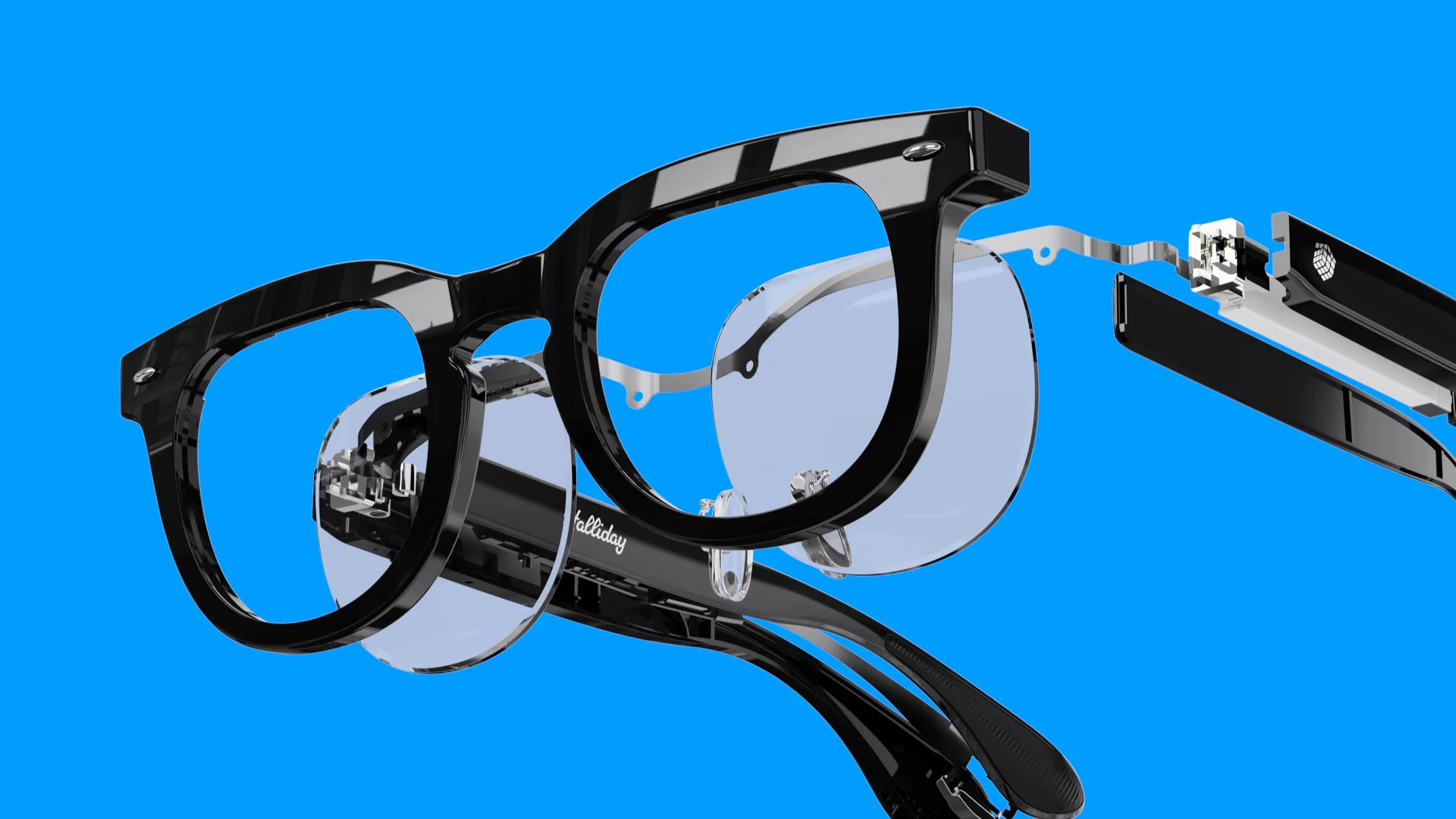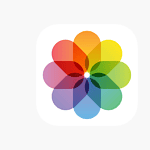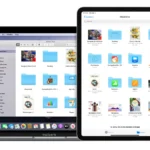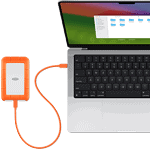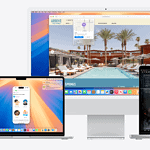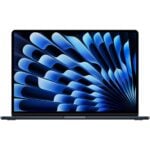Halliday has introduced new smart glasses at CES 2025 that blend seamlessly into daily life, featuring a stylish design and advanced capabilities. Key highlights include an invisible display and a proactive AI assistant that project images directly into users’ vision.
These glasses aim to enhance productivity and user experiences, providing a “superpowers” effect for navigating daily activities. Shipping is expected to begin by the end of Q1 2025, positioning Halliday at the forefront of wearable technology innovation.
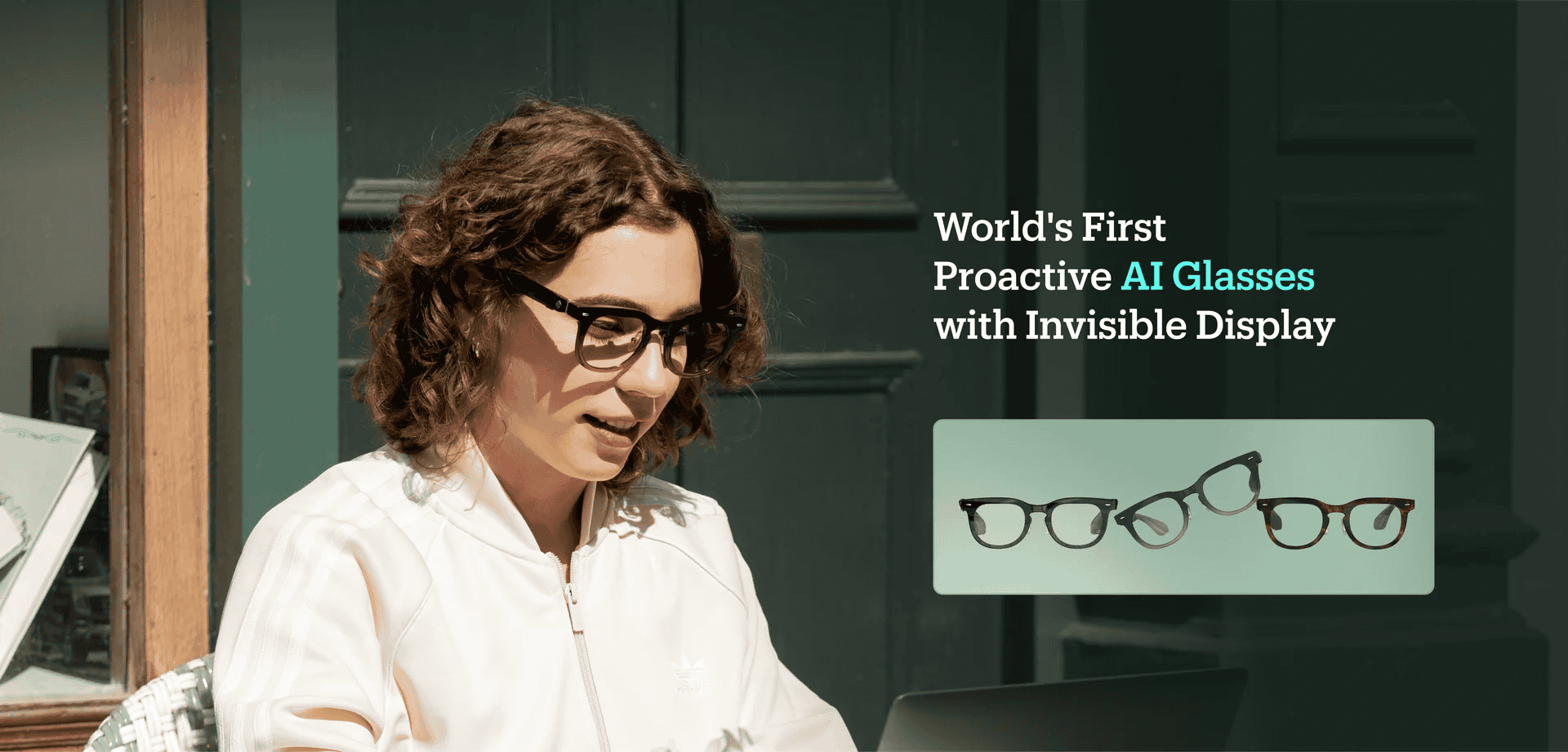
Halliday’s DigiWindow Technology: A New Era for Smart Glasses
How Halliday’s Smart Glasses Work
Halliday’s new smart glasses use a unique “DigiWindow” display. This tech projects images right onto your eyes. No screen or lens is visible to others. This makes the display seem invisible. It’s a big change from older smart glasses with bulky displays.
Design and Comfort
These glasses look like normal eyewear. They have a retro style. They’re also light, just 35 grams. This is lighter than many other smart glasses. You can wear them all day without discomfort.
What the Glasses Can Do
Halliday’s glasses pack many features. You get real-time translation for easy talks with people who speak other languages. Notifications pop up right in your view. Navigation guides you without needing to look at your phone. An AI assistant helps you with tasks. The glasses link to your phone with Bluetooth.
Halliday Smart Glasses vs. Competitors
Several companies make smart glasses. But, Halliday’s “invisible” display sets them apart. Here’s a quick comparison:
| Feature | Halliday | Other Smart Glasses |
|---|---|---|
| Display | Invisible DigiWindow | Visible lens or screen |
| Weight | 35 grams | Often heavier |
| Style | Retro, normal glasses look | Sometimes bulky or futuristic |
| Price | Starting at $489 | Varies widely |
When You Can Get Them and How Much They Cost
Halliday plans to ship these glasses in March 2025. Prices start at $489. This puts them in a competitive price range for advanced smart glasses.
A Close Look at the Tech
The key to Halliday’s innovation is the DigiWindow display. This system avoids the need for a traditional micro-display and waveguide combination used by other smart glasses. Instead, it uses a new type of projection technology that directly stimulates the retina to create the perception of an image. This allows for a much more compact and lightweight design, as well as the unique “invisible” effect. The glasses use low-power lasers and micro-mirrors to scan images onto the retina at a safe intensity. This is coupled with advanced eye-tracking to ensure the image is always in focus and correctly positioned relative to the wearer’s field of view.
Short Summary:
- The Halliday smart glasses project images directly onto the user’s field of vision without any lenses.
- They feature an advanced AI assistant that can anticipate user needs and provide contextual insights.
- Starting price is set between $399 and $499, with availability expected by the end of Q1 2025.
The world of smart glasses has taken an exhilarating leap at CES 2025 with the introduction of Halliday’s groundbreaking eyewear. These smart glasses integrate DigiWindow technology that projects information directly onto the user’s eye, creating an immersive experience without the need for traditional lenses. Instead of relying on lenses to display content, the images are beamed to the user’s natural field of vision, making the display virtually undetectable to others. Halliday’s approach signifies a shift in how wearable technology will enhance everyday experiences.
Halliday’s smart glasses are not only practical; they are also a testament to fashionable design. Inspired by the fictional character James Halliday from Ernest Cline’s Ready Player One, these glasses are available in classic styles, including matte black and tortoiseshell. They cater to users with vision prescriptions while promising not to compromise on aesthetics. As Halliday noted, “This tool combines vintage charm and retro elegance with innovation, offering users an invisible superpower to navigate life’s challenges with confidence and style.”
One of the most distinct features of these smart glasses is the incorporation of a proactive AI assistant. Unlike typical voice assistants that merely respond to commands, this advanced AI continuously listens and analyzes interactions. Halliday’s AI can initiate conversations and deliver insights based on the context—even summarizing details during meetings without prompting. “During a meeting, it can proactively answer complex questions, summarize key discussion points, and generate meeting notes afterward,” says Halliday’s press release, showcasing the profound capabilities of this innovative technology.
The glasses also come equipped with several practical features designed to improve productivity and user convenience. For instance, the Echo Mode anticipates the needs of the user, providing suggestions and answers that lead to more effective communication. Additionally, real-time AI translation services support up to 40 languages, making cross-cultural conversations seamless and efficient.
Comparatively light, Halliday’s smart glasses weigh a mere 35 grams (1.23 ounces), nearly half the weight of standard smart glasses, and are designed for comfort throughout the day. Boasting a battery life of up to eight hours, these glasses ensure users are equipped for extended use, whether for meetings, socializing, or daily tasks.
In terms of connectivity, Halliday smart glasses seamlessly pair with smartphones via Bluetooth, unlocking a comprehensive range of capabilities. Users can discreetly check messages, respond with quick actions, create audio summaries, and even use the glasses as a teleprompter to aid in public speaking. The integration of a smart ring for interface navigation further enhances the user experience, making controls easily accessible.
What sets Halliday apart from other smart glasses is its minimization of familiar issues plaguing traditional wearable tech. For example, the glasses utilize DigiWindow technology to avoid defects such as rainbow patterns or front light leakage that are common in waveguide lenses. The projection is accomplished without obstructing the user’s primary field of vision, and the content displayed is not visible to bystanders, providing a discreet experience.
During a recent test of the Halliday Smart Glasses at CES 2025, the technology was met with enthusiasm for its innovative approach and potential benefits. While the early iteration showcased could be seen as slightly unfinished, the underlying technology presents exciting possibilities for the future of smart eyewear.
“These glasses can analyze conversations you’re having and answer questions or offer insights.”— Halliday spokesperson
The Features at a Glance
- Proactive AI Assistant: Continuously listens, understands context, and provides relevant information without prompting.
- DigiWindow Technology: Projects data directly into the user’s field of vision without lenses, creating a virtual screen effect.
- AI Translation: Real-time translation for up to 40 different languages for effective communication globally.
- Seamless Connectivity: Bluetooth integration with smartphones for notifications, messages, and audio memo summaries.
- Teleprompter Functionality: Displays speech prompts for public speaking without physical notes.
- Sleek Design: Lightweight at 35 grams with options for prescription lenses and available in classic styles.
Halliday has made significant strides in the realm of wearable technology since its inception in 2021. Founded in Shenzhen, China, this startup is spearheaded by industry veterans who possess deep knowledge in micro-optical and AI technologies. This experience culminates into a product that not only advances eyewear but also harmonizes with daily life needs, effectively merging technology with personal style.
Looking ahead, Halliday’s smart glasses are set to hit the market between $399 and $499, with pre-orders expected to start shortly after their debut at CES. With such a competitive price point, they are positioned against other market entrants like the Ray-Ban Meta smart glasses, which have gained recognition for their affordability but lack a display.

